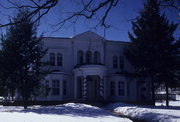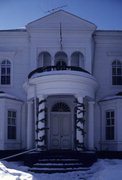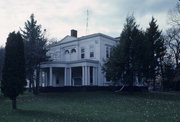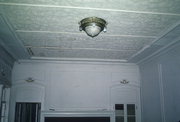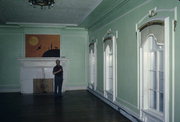| Additional Information: | A 'site file' exists for this property. It contains additional information such as correspondence, newspaper clippings, or historical information. It is a public record and may be viewed in person at the Wisconsin Historical Society, State Historic Preservation Office.
No one building can tell the history of an entire town, but in the case of Necedah, the Weston-Babcock House comes close. The careers of the building’s namesakes read like a chronicle of the whole community, lurching from boom to bust to rebirth. Thomas Weston founded the logging and milling company that drove Necedah’s early development in the late 1840s and 1850s, and when the town was formally organized in 1853, he was elected its first chairman. But by the 1880s, when Joseph Babcock acquired Weston’s company, logging had largely depleted the area’s pineries. So Babcock shifted the firm’s focus from processing raw lumber to manufacturing wood products. Upon his election to Congress in 1892, Joseph handed the reins of the business over to his son Charles. By 1899, logging activity had moved so far from Necedah that Charles, like other area mill owners, had to dissolve his company, but he subsequently founded the Necedah Bank, among other new enterprises, helping to sustain the town as a commercial and financial center for area farmers.
This house shows the imprint of Weston’s and Charles Babcock’s lives and vividly reflects changing tastes in architecture. When Weston built his Main Street residence in the late 1860s, the Italianate mode was in vogue. By the time Charles Babcock bought it in the 1910s, Italianate design had become passé. To express his wealth and stature, Babcock updated the building in the newly fashionable Beaux-Arts Classical idiom. Babcock’s unknown designer preserved the house’s form, bays, and openings but removed all the showiest Italianate elements--a belvedere and balustraded porches--and replaced them with dignified classical details. Dramatic bracketed roof overhangs gave way to a restrained classical entablature; the gables at the center of each facade were converted into classical pediments. On the east side of the house, a second-story inset porch was walled in, leaving only fanlights framed by classical pilasters. The most dramatic change, however, came on the ground floor, where ornate verandas gave way to sober classical porches with grouped Doric columns. Visitors had formerly entered the house through a massive rectangular arched porch now passed beneath a more elegant semicircular entrance portico. Today the stately Weston-Babcock House stands out in a quiet town of otherwise modest homes. |
|---|

